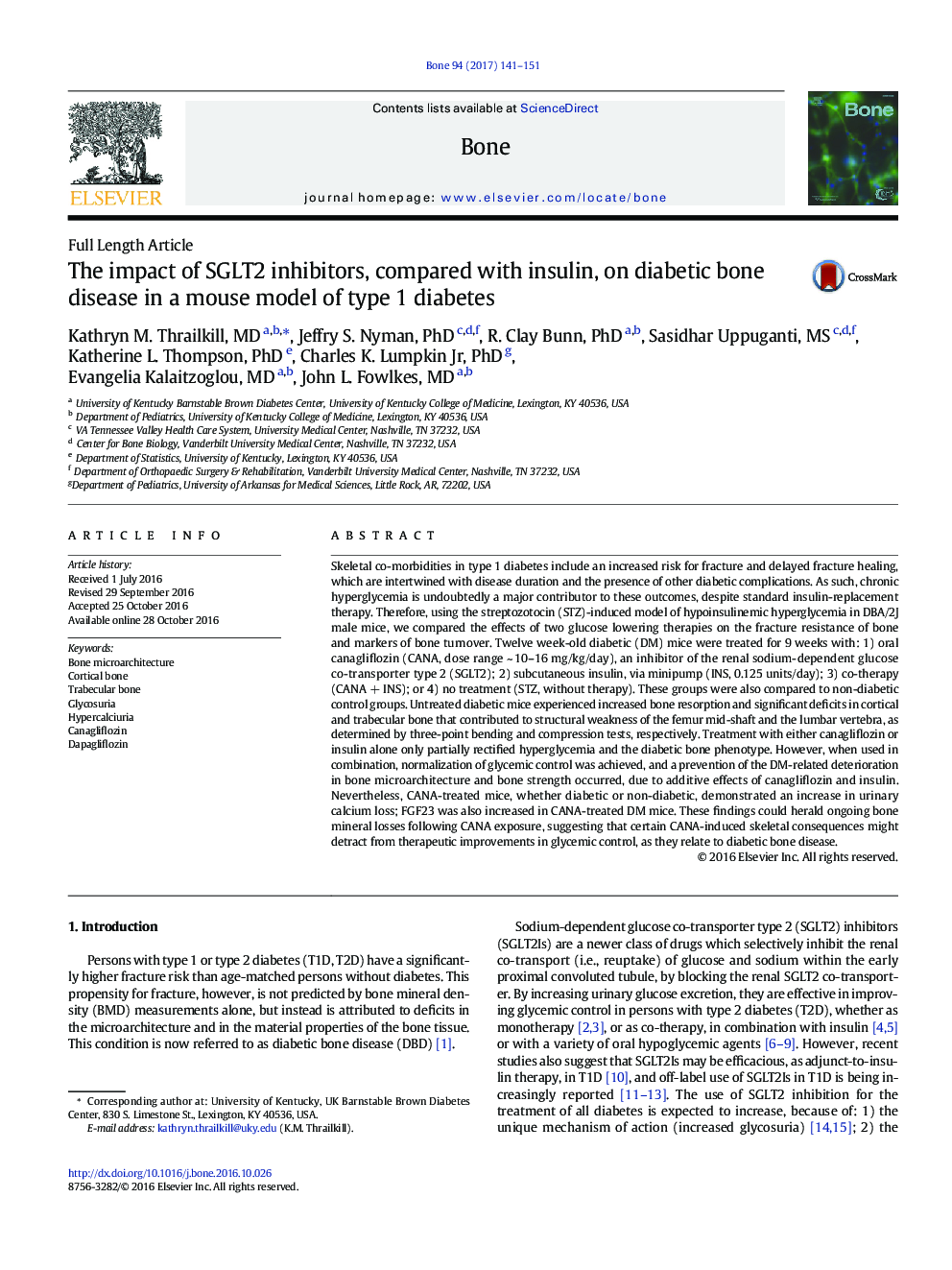| کد مقاله | کد نشریه | سال انتشار | مقاله انگلیسی | نسخه تمام متن |
|---|---|---|---|---|
| 5585379 | 1568125 | 2017 | 11 صفحه PDF | دانلود رایگان |
عنوان انگلیسی مقاله ISI
The impact of SGLT2 inhibitors, compared with insulin, on diabetic bone disease in a mouse model of type 1 diabetes
دانلود مقاله + سفارش ترجمه
دانلود مقاله ISI انگلیسی
رایگان برای ایرانیان
کلمات کلیدی
موضوعات مرتبط
علوم زیستی و بیوفناوری
بیوشیمی، ژنتیک و زیست شناسی مولکولی
زیست شناسی تکاملی
پیش نمایش صفحه اول مقاله

چکیده انگلیسی
Skeletal co-morbidities in type 1 diabetes include an increased risk for fracture and delayed fracture healing, which are intertwined with disease duration and the presence of other diabetic complications. As such, chronic hyperglycemia is undoubtedly a major contributor to these outcomes, despite standard insulin-replacement therapy. Therefore, using the streptozotocin (STZ)-induced model of hypoinsulinemic hyperglycemia in DBA/2J male mice, we compared the effects of two glucose lowering therapies on the fracture resistance of bone and markers of bone turnover. Twelve week-old diabetic (DM) mice were treated for 9Â weeks with: 1) oral canagliflozin (CANA, dose range ~Â 10-16Â mg/kg/day), an inhibitor of the renal sodium-dependent glucose co-transporter type 2 (SGLT2); 2) subcutaneous insulin, via minipump (INS, 0.125Â units/day); 3) co-therapy (CANAÂ +Â INS); or 4) no treatment (STZ, without therapy). These groups were also compared to non-diabetic control groups. Untreated diabetic mice experienced increased bone resorption and significant deficits in cortical and trabecular bone that contributed to structural weakness of the femur mid-shaft and the lumbar vertebra, as determined by three-point bending and compression tests, respectively. Treatment with either canagliflozin or insulin alone only partially rectified hyperglycemia and the diabetic bone phenotype. However, when used in combination, normalization of glycemic control was achieved, and a prevention of the DM-related deterioration in bone microarchitecture and bone strength occurred, due to additive effects of canagliflozin and insulin. Nevertheless, CANA-treated mice, whether diabetic or non-diabetic, demonstrated an increase in urinary calcium loss; FGF23 was also increased in CANA-treated DM mice. These findings could herald ongoing bone mineral losses following CANA exposure, suggesting that certain CANA-induced skeletal consequences might detract from therapeutic improvements in glycemic control, as they relate to diabetic bone disease.
ناشر
Database: Elsevier - ScienceDirect (ساینس دایرکت)
Journal: Bone - Volume 94, January 2017, Pages 141-151
Journal: Bone - Volume 94, January 2017, Pages 141-151
نویسندگان
Kathryn M. MD, Jeffry S. PhD, R. Clay PhD, Sasidhar MS, Katherine L. PhD, Charles K. PhD, Evangelia MD, John L. MD,